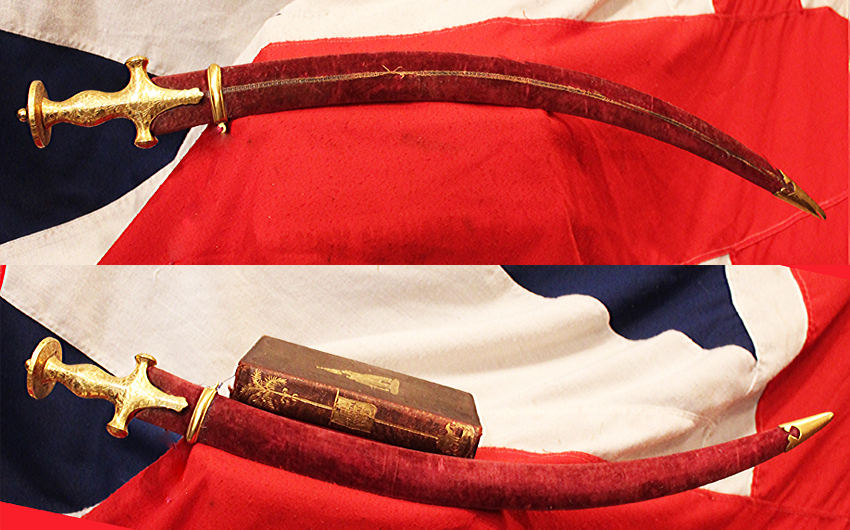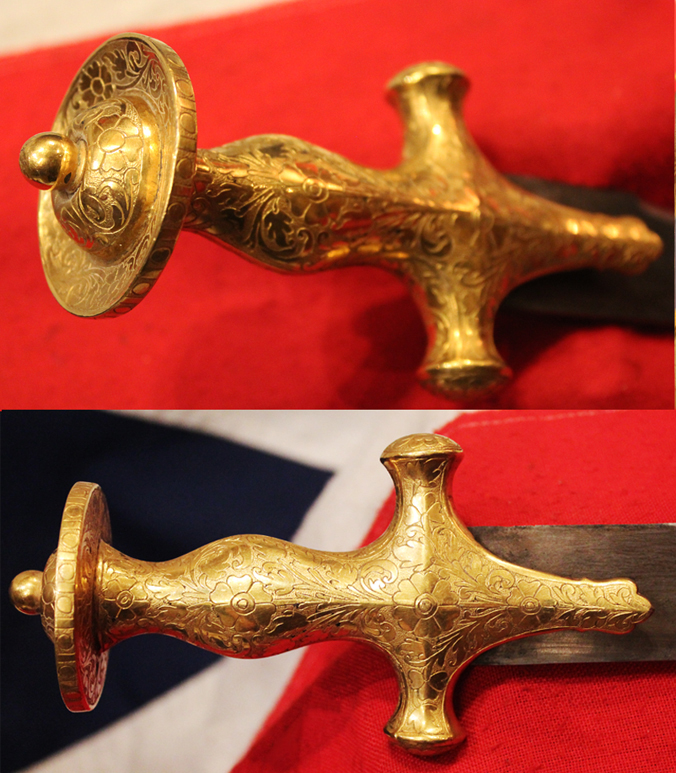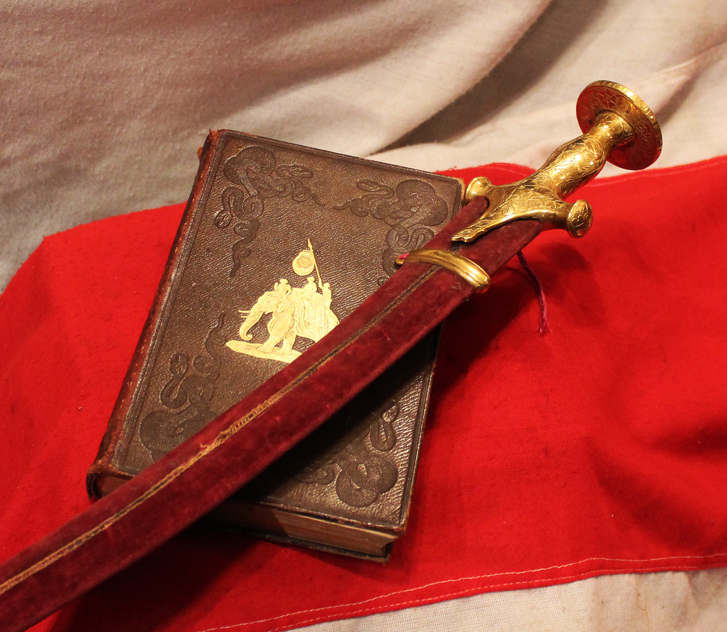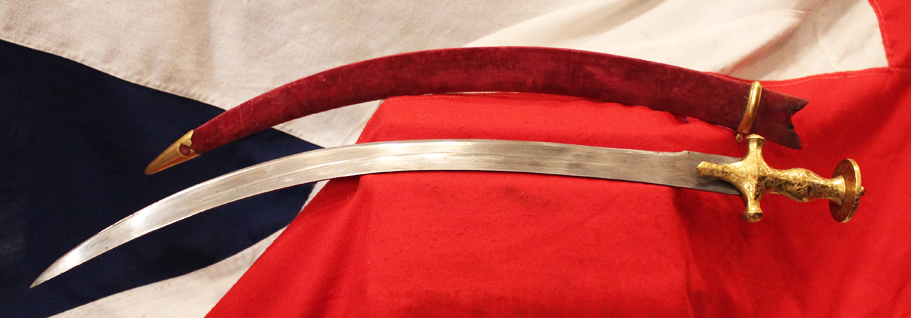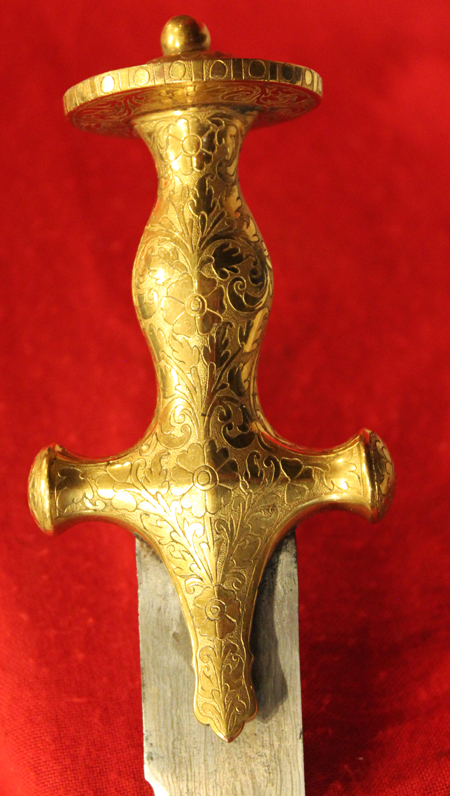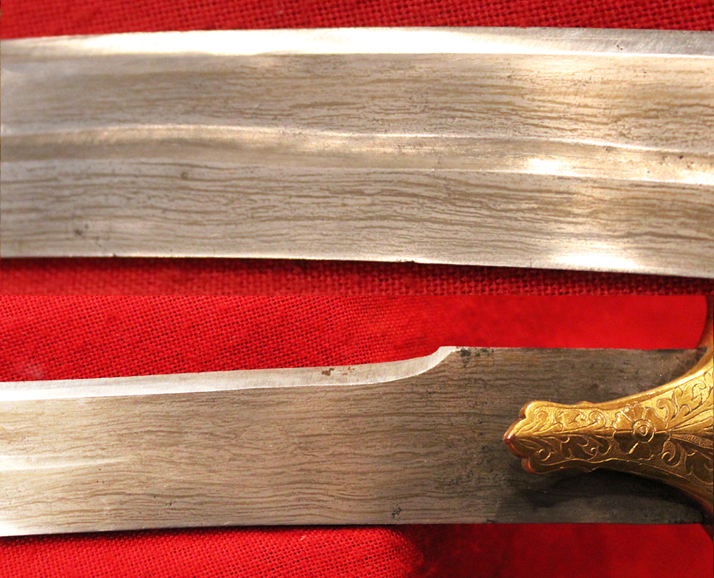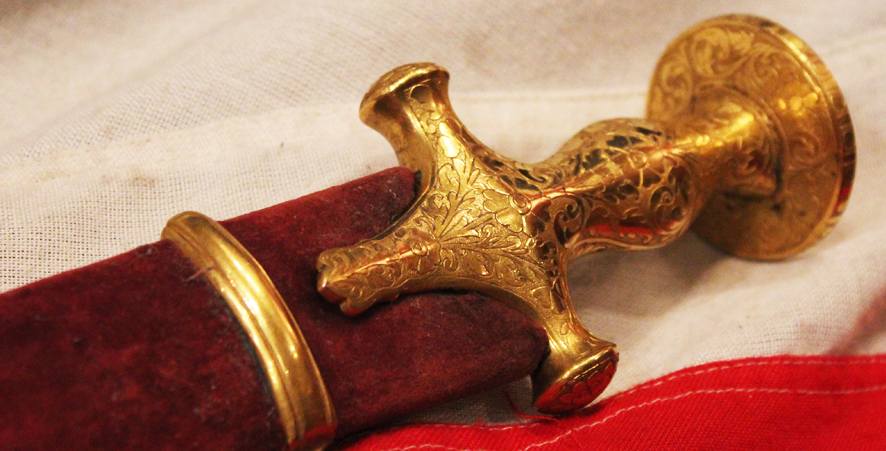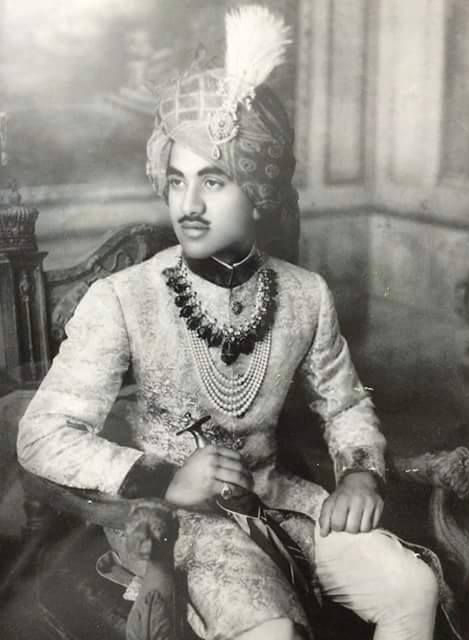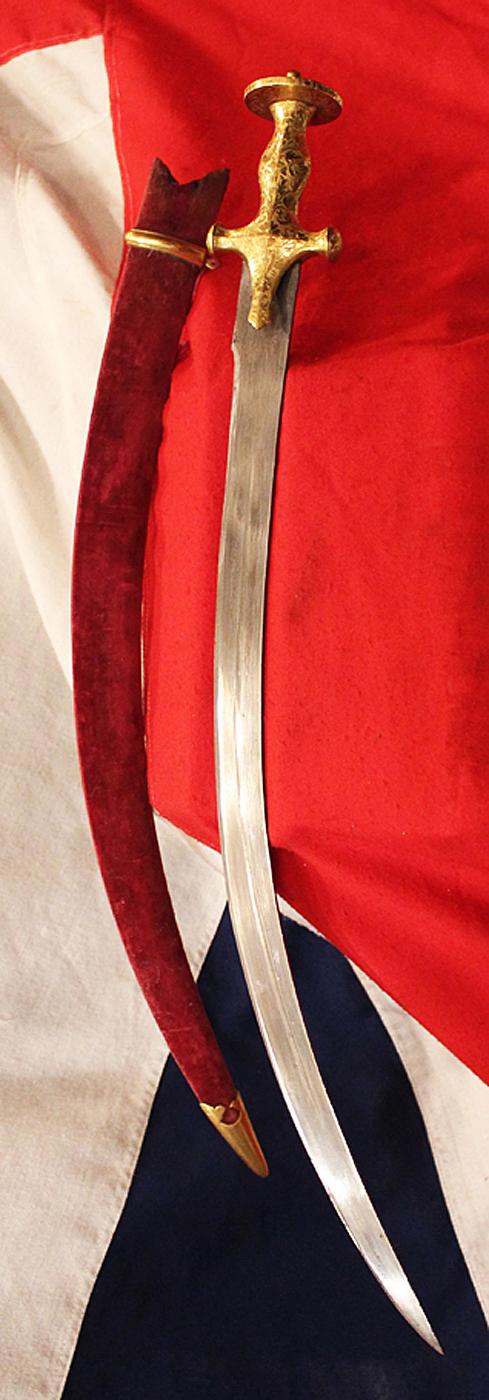An Exceptionally Beautiful Museum Piece. A Gold Hilted Sword With ‘Laminated Damascus’ Pattern Steel Blade. A Sword of Highest Museum Quality. An Indian Prince's Tulwar, Accompanied With His Oriental Annual 1838
A Maharajah's royal gold tulwar, with its superb running damascus steel blade, with a dominant flowing grain, and its engraved gold hilt in traditional Indo Persian tulwar style, finely decorated with scroll engraving and traditional oriental flowers.
Mounted in its original velvet scabbard now a little faded with single gold hanging mount and gold chape. A royal tulwar such as the Maharajah Duleep Singh may have once worn as a boy, or, worn by a similar ranking Moghul prince. The gold on the hilt and mounts are applied sheets of hammered gold that are overlaid onto a base for additional strength.
A most fine gifted book with its companion fabulous sword with brown leather binding and gold title, with embossed pure gold leaf elephant and howdah to front and back covers. Scenes of India by Reverand Hobart Caunter B.D. with 22 engravings from drawings by Willian Daniell R.A.
We show a Victorian painting of the Maharajah Duleep Singh with his royal tulwar, who became the Sikh ruler of the Punjab when he was no more than a child. But with family intrigues and treachery never being far behind (not to mention the fact that the Punjab was such a valuable territory, dividing India from Afghanistan - the passage through which the Russians might threaten to enter India and therefore endanger the British rule) in due course the Punjab was annexed at the end of the second Anglo Sikh war. In 1849, when that short war ended, the boy maharajah gave up this throne to be raised by a British army officer, in whose care he eventually converted to Christianity - after which he was sent to England and raised as a gentleman aristocrat, well away from those who might have sought to use him as a political pawn. He became a very great favourite of Prince Albert and Queen Victoria. The portrait of Duleep above was painted by Victoria who called the prince her 'beautiful boy' and who often had him accompany her own family on holidays spent in the Isle of Wight. A sword brought to England in the time of the Raj. It is important to note that the Raj (in Hindi meaning 'to rule' or 'kingdom') never encompassed the entire land mass of the sub-continent.
Two-fifths of the sub-continent continued to be independently governed by over 560 large and small principalities, some of whose rulers had fought the British during the 'Great Rebellion', but with whom the Raj now entered into treaties of mutual cooperation.
The 'Great Rebellion' occurred in 1858 and saw the end of the East India Company and the creation of the Raj
Indeed the conservative elites of princely India and big landholders were to prove increasingly useful allies, who would lend critical monetary and military support during the two World Wars.
Hyderabad for example was the size of England and Wales combined, and its ruler, the Nizam, was the richest man in the world.
The word maharaja, literally great king, conjures up a vision of splendour and magnificence. The image of a turbaned, bejewelled ruler with absolute authority and immense wealth is pervasive and evocative, but it fails to do justice to his role in the cultural and political history of India.
From the beginning of the 18th century to the mid-20th century the changing role of the maharajas and their patronage of the arts, both in India and Europe, resulted in the production of splendid and beautiful objects symbolic of royal status, power and identity.
The secular and sacred power of an Indian king was expressed most spectacularly in the grand public processions that celebrated royal events and religious festivities. Riding a richly caparisoned elephant or horse, the ruler was lavishly dressed and jewelled and surrounded by attendants bearing symbolic attributes of kingship: a royal parasol, royal tulwar or dagger, chauri, fans and staffs of authority.The vision of a king in all his splendour was believed to be auspicious. It was central to the concept of darshan, the propitious act of seeing and being seen by a superior being, whether a god or a king. Although originally a Hindu notion, the idea of darshan became an integral aspect of kingship throughout the subcontinent. In India rulers were expected to exercise rajadharma, meaning the duties and behaviour appropriate to a king. These would include the protection of their subjects, the adjudication of disputes, and the ministering of justice and punishment. Martial skills were as important as administrative and diplomatic ones; as well as being wise and benevolent, kings were expected to be fierce warriors and skilled hunters. Rajadharma was also exercised through the patronage of poets, musicians, architects, artists, craftsmen and religious foundations. It was often the case, especially in the old days of empire, where student princes presented gifts of esteem such as these to favoured tutors at oxbridge.
Overall in scabbard 26.75 inches, blade 22.25 inches.
Code: 22607
8950.00 GBP

